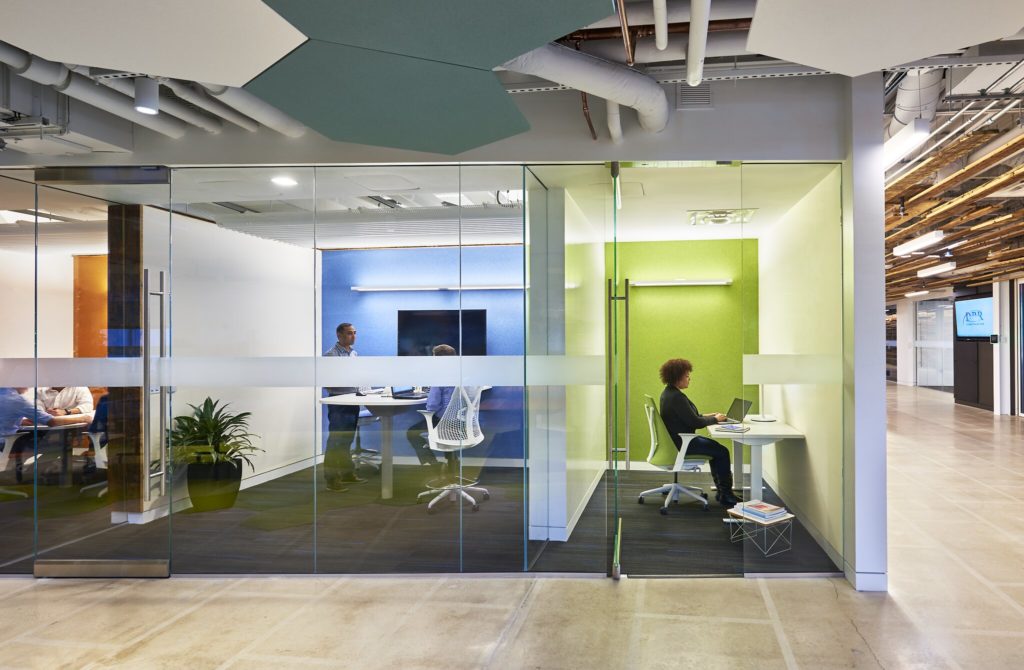As the people across the globe respond to the COVID-19 pandemic, a concerted effort has been made to keep occupants safe as office buildings reopen, an endeavor that can inherently use more energy from carbon-intensive generation resources exacerbating climate change . That’s due to the demand for more increased ventilation, which it turns out can go a long way to preventing the spread of diseases like COVID-19. With buildings accountable for the major share of the U.S. carbon footprint, building owners and designers must proactively operate their facilities to reduce greenhouse gas (GHG) emissions while maintaining a new level of healthy building requirements.

Building energy efficiency and decarbonization measures offer the ability to reduce GHG emissions and minimize the potential for the next pandemic to take root. The COVID-19 pandemic is impacting everyone but at various levels of severity. You may have heard someone say, “we’re all in the same storm, but in different boats.” The same can be said for climate change. We’re all impacted by climate change but may live in a place where sea level rise doesn’t affect us. Or, we may have air conditioning, so the summer heatwaves only impact the energy bill, not day to day life. We are all part of a climate community, whether we feel connected to it or not. While workers are remote during this COVID-19 pandemic, office building owners have an opportunity to retrofit to increase energy efficiency, permanently reduce carbon emissions, and deliver a healthier space for returning occupants.
How we got here: Climate Change and Buildings
Buildings have always been a major user of energy, from coal-fired boilers in the 1800s to the advent of gas-fired furnaces and rooftop package units for providing occupants’ thermal comfort. As buildings got more hermetically sealed in the 1960s onward, the importance of regulating indoor air quality increased and drove energy-intensive ventilation systems and regulations of air changes per hour per occupant. In parallel, our population and economy grew, driving an increase in the number of buildings and the size of homes and buildings. Keeping ourselves sheltered and providing places to work, shop, eat and be entertained has an enormous energy impact.
Buildings are responsible for nearly 40% of annual U.S. carbon emissions and represent a critical piece of a low carbon future, according to the International Panel on Climate Change (IPCC). Without intervention, building GHG emissions may double by 2050, but buildings have the potential to reduce GHGs by as much as 87% even as floor area increases through improved technologies and operating practices. Reducing building energy improves emissions either directly at the building level by reducing or eliminating onsite gas-fired combustion technologies (a trend now known as electrification) or upstream at the generation plant by curtailing demand of building electricity use, as 63% of U.S. electricity is generated by fossil fuels. With over 50% of the buildings today having been built before 1980 when energy codes first began to address energy waste, the impact of our built environment on climate change is acute.
GHG Reductions Due to the Pandemic
Business as usual will not solve the climate crisis. In the first few months of the COVID-19 pandemic, industry slowed, restaurants closed, and office workers started to work from home. Conferences, trips, and vacations were canceled, which nearly halted all air travel. By early April 2020, daily global emissions were reduced by 17%. Cities consistently smothered in smog reported seeing mountains for the first time in a generation. Even seismologists noticed that the world wasn’t moving as much. There was hope that breathing would be easier for a moment, and the slowed economy would positively impact annual GHG emissions.
While countries around the world limited carbon emissions at the start of the pandemic, the results are not expected to last long. 2020 carbon emissions are now estimated at a 7% global reduction from 2019 levels. Likewise, in similar scenarios in modern history where emissions fell, such as the 1973 oil crisis or the 2008 Great Recession, the years following the dip experienced an increase in emissions. Further, even if all countries maintained the reduced pandemic-level of global emissions, emissions still have to be reduced by 50% to meet the 2030 goal of stopping global temperatures from rising 1.5°C above preindustrial levels.

How we got here: Climate Change and Pandemics
Changes in the climate, largely brought on through the use of fossil fuels, facilitate an environment for the spread of pandemics. Extreme weather influences health as the effects of severe heat/cold, ground-level ozone, and wildfire smoke stress bodily systems. Dangerous temperatures and poor air quality lead to cardiovascular, kidney, and chronic pulmonary diseases.
Vulnerable members of society are more susceptible to these climate change impacts. Those living in proximity to fossil-fuel electricity generating plants, typically of lower incomes, are exposed to toxic air emissions that greatly affect their health. As increased GHG emissions pollute local communities’ air and water, it means a person’s zip code has more health impacts than their genetic code. The body’s resiliency also plays a large role. COVID-19 impacts the heart and lungs, which may be previously strained from climate change, making it more difficult to fight off viruses.
COVID-19 impacts the heart and lungs, which may be previously strained from climate change, making it more difficult to fight off viruses.
Habitat loss from intentional or unintentional deforestation, a climate change result, pushes species that have never cohabitated to be in close proximity with each other. Humans and non-human animals are sharing more physical space than ever before in modern history. This closeness provides an opportunity for pathogens to find new hosts across species. The combined actions of more severe climate events, weakened immune systems and exchanging pathogens with more species provide a perfect scenario for viruses to expand globally.
Where to Next
Fossil fuel reduction in the building sector can reduce climate change impacts and subsequent adverse health effects. Combined with resource efficiency, species habitat can be reversed or restored, and future pandemics can be curtailed. Building sector activities offer opportunities to address GHG emissions reduction, indoor and outdoor air quality, and resource preservation. Unless we address our role as climate citizens and make necessary changes, the building sector’s responsibility for this (and the next) global pandemic will be in the spotlight. The re-occupancy of our office spaces provides a nexus of opportunity for building owners to address the safe and improved indoor air conditions without compromising the health of the planet.
The re-occupancy of our office spaces provides a nexus of opportunity for building owners to address the safe and improved indoor air conditions without compromising the health of the planet. The white paper Reopening Office Buildings: Creating a Heathy Environment for Occupants and the Planet, provides details on workplace policies, space alterations, and mechanical adjustments to support facility managers and owners, along with Retrofit and Reopening Recommendations for Offices: A Quick Checklist, a brief checklist for retrofits and reopening. A second blog in this two-part series will highlight Future Proofing Buildings for a More Resilient Tomorrow.
by Webly Bowles, Project Manager

